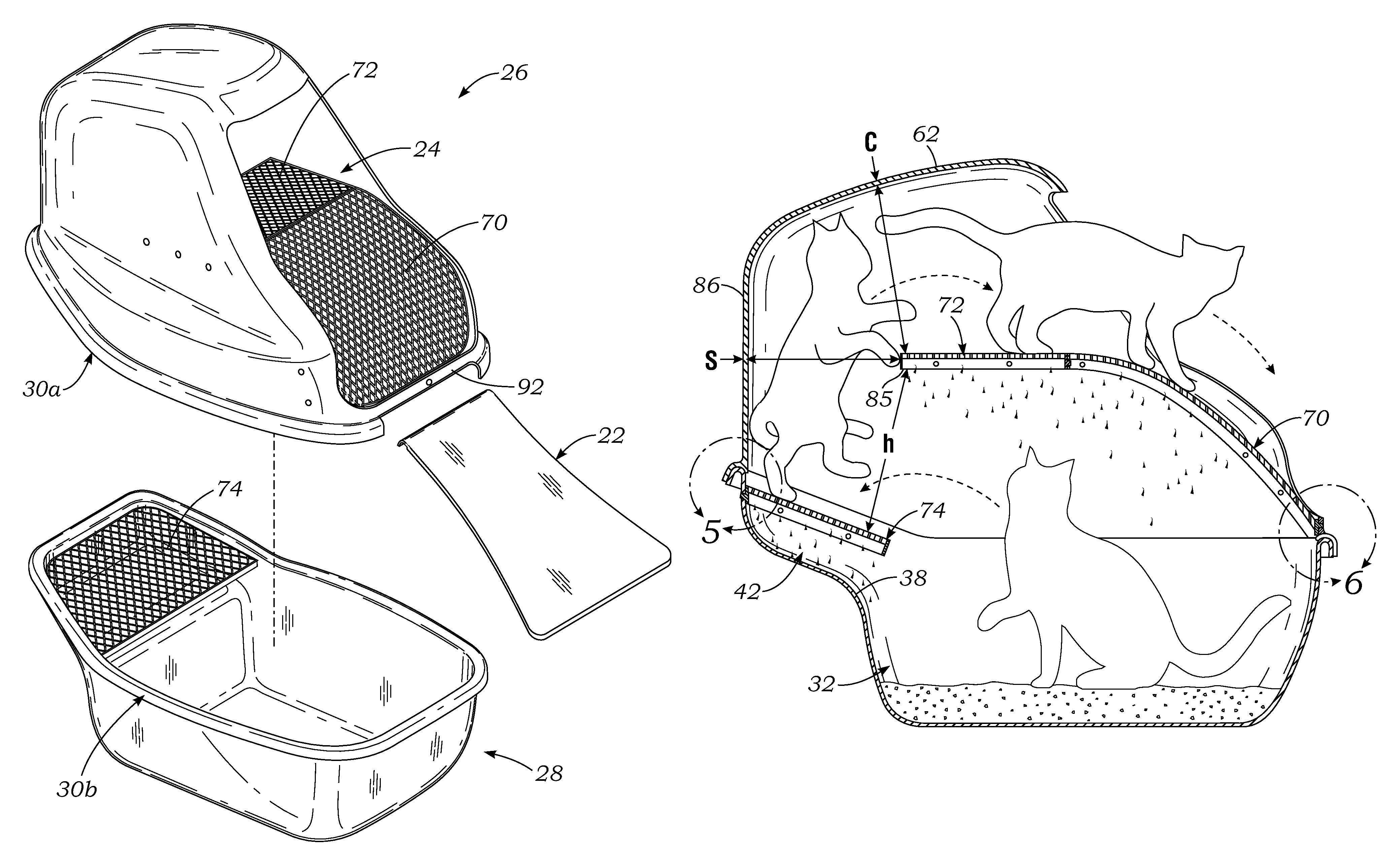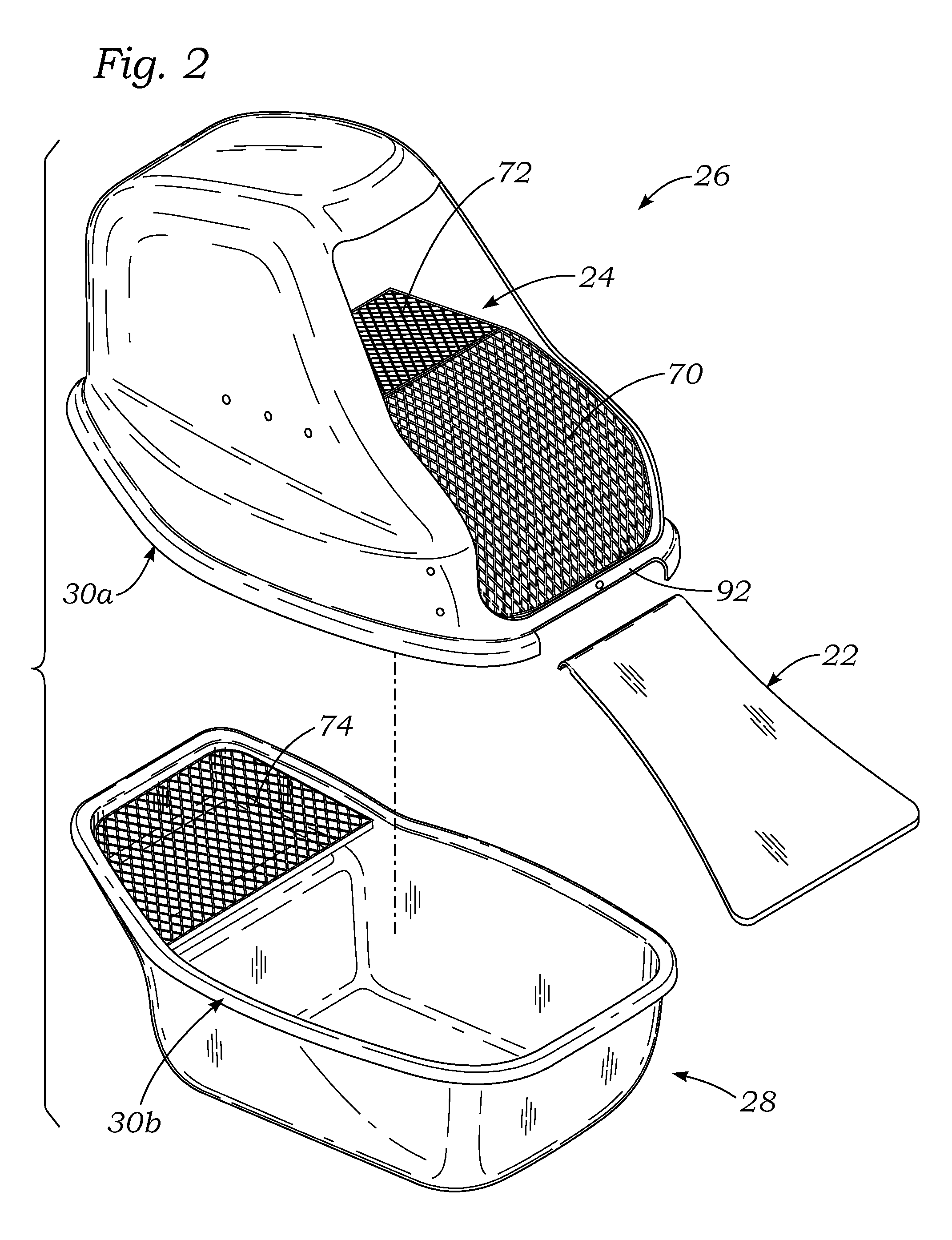Tidy cat litter box
a litter box and litter technology, applied in the field of litter boxes, can solve the problems of litter to be sprayed out of the litter box, need for frequent cleaning of the room, etc., and achieve the effect of reducing the amount of litter and facilitating entry and exit of the litter box
- Summary
- Abstract
- Description
- Claims
- Application Information
AI Technical Summary
Benefits of technology
Problems solved by technology
Method used
Image
Examples
Embodiment Construction
[0025]The present invention pertains to litter boxes for pets such as cats, or other small animals. A “pet litter box” refers to a litter box that is suitable for use by cats, but also might be utilized for other domesticated animals.
[0026]FIG. 1 shows a pet litter box 20 of the present application and a cat advancing up an entrance ramp 22 toward an opening 24 thereof. As seen in exploded in FIG. 2, the litter box comprises an upper lid 26 above a lower tray 28. Preferably, both the upper lid 26 and the lower tray 28 are molded from a durable polymer and each has a reinforced lip 30a, 30b, respectively, which mates with the lip of the other component. The assembled upper lid 26 and lower tray 28 provide a complete enclosure aside from the front opening 24. That is, no litter can escape from the assembled litter box 20 except for through the front opening 24. It should be noted that although two main components, the lid 26 and tray 28, are preferably utilized to define the enclosure...
PUM
 Login to View More
Login to View More Abstract
Description
Claims
Application Information
 Login to View More
Login to View More - R&D
- Intellectual Property
- Life Sciences
- Materials
- Tech Scout
- Unparalleled Data Quality
- Higher Quality Content
- 60% Fewer Hallucinations
Browse by: Latest US Patents, China's latest patents, Technical Efficacy Thesaurus, Application Domain, Technology Topic, Popular Technical Reports.
© 2025 PatSnap. All rights reserved.Legal|Privacy policy|Modern Slavery Act Transparency Statement|Sitemap|About US| Contact US: help@patsnap.com



